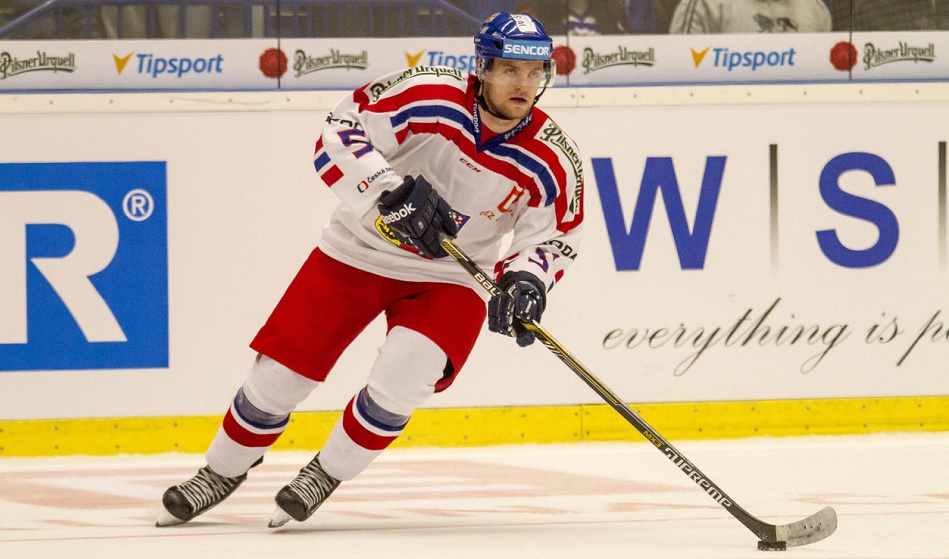The dog days of summer have arrived and many fans of the Canadiens are still completely puzzled with the current roster and what it may look like in October. Is this a case where management is leaving room for younger players to prove their worth? That seems unlikely with the recent signatures of Ales Hemsky and Mark Streit. Will the available $9M be spent in a way that clarifies this confusing summer by GM Marc Bergevin? That also seems unlikely considering most teams appear to be set. Speaking of this money, how does Bergevin end up with this money while allowing Alexander Radulov to leave for the Lone Star State and Andrei Markov to go home? The Markov situation is most confusing considering the team ends up with what now looks like a 9-man blue line.While very little excitement has been made
While very little excitement has been made over the left side of the blueline boasting names like Streit, David Schlemko, Karl Alzner, Brandon Davidson, and even Jakub Jerabek, one should wonder who will fit next to Alzner to complete the left-side top-4 on the team. While many seem content to choose conservatively with Schlemko, it seems rather clear that the Streit acquisition places that burden squarely on the shoulders of Jerabek as the man Bergevin is hoping fits in and plays those minutes. If that’s the case, then he could be in line for quite the rookie season.
There are two very good reasons to temper expectations regarding Jakub Jerabek. The first of these is recent history in Jiri Sekac. That acquisition did not work out so well for Montreal (or Anaheim, or Chicago, or Arizona). But Jerabek is different. Consider that defencemen are players that team take this risk with far less often. Other enticing names such as Artyom Alyayev, Mat Robinson, and Nick Bailen were all ignored by NHL clubs, while it is reported that more than one team was interested in Jerabek.
It’s also interesting to study the case of another defender who made that same jump last season: Nikita Zaitsev of the Toronto Maple Leafs. In Zaitsev’s last two seasons in the KHL, he produced 32 points in 57 GP and 26 points in 46 GP which is an identical 0.56 PPG pace. In his first NHL season, he was impressive in producing 36 points in 82 games for a 0.44 PPG clip. While Jerabek is a year older, his production was superior with 33 and 34 points in 52 and 59 games played (0.6 PPG). So, one could surmise that Jerabek could mirror that of Zaitsev’s 36 points, but could Jerabek surpass these expectations?
To answer that last question, it would be important to consider Jerabek’s expected role on the team. Admittedly, this might be where my view of things differs greatly from many Montreal fans. As previously mentioned, all of Joe Morrow, Jerabek, Schlemko, Davidson, and Streit will be battling for the final spot on the left of either Jeff Petry or Shea Weber. Alzner is much better suited to play next to Petry, where he can essentially protect him and allow Petry to play his game, as risky as it might be, to its full potential. Also, worth noting that Weber is better than Petry to isolate a lesser defender, as shown last year when he continuously partnered with Alexei Emelin and Andrei Markov. Finally, in a league built on skill and puck-moving defencemen, this quality is somewhat lacking at the top of the Montreal blueline. When placing all three of these ideas together, one can easily remove the name of Schlemko from potential partners for Weber. A lack of ability to play massive minutes will eliminate Streit. A lack of experience should disqualify all of Morrow, Davidson, and Jerabek, but it won’t. Considering the irregular play of both Davidson and Morrow thus far in their NHL careers, it becomes not that far-fetched that Jerabek could play some serious minutes as a rookie in the NHL which means he could exceed Zaitsev’s 36-point total if all goes well.
No one should argue that this move is assured of working. Head coach Claude Julien is known for his defensive prowess, and the main concern around Jerabek remains his defensive awareness. There’s also the very real possibility that even if Jerabek plays next to Weber at 5-on-5, Benn will play there to kill penalties, and perhaps Streit gets time there on the power play, the latter point meaning less point production for Jerabek. Despite these points, the evidence seems to suggest that Jerabek will, at the very least, get the first chance at grabbing the giant-sized Markov hole in the roster.
Speaking of Markov, his point total last season was the same as Zaitsev: 36 points. So, give credit or criticism to Bergevin, but recognize that the GM is sticking his neck out and trying to move this team in the right direction. Markov scored 36 points while on a downward trajectory, so maybe Jerabek can score the same or more while improving under the tutelage of one the game’s best in Julien. How many will really admit to being wrong about the Markov signing situation if Jerabek proves to be as productive? Bergevin is gambling, and fans should be cautiously optimistic that Jerabek can become more of an Artturi Lehkonen than a Sekac. Then the available $9M can be used to shore up the middle of the ice instead of the already expensive back-end. In a perfect world, Jakub Jerabek becomes a breakout candidate at an optimistic 40 points. Is that too much pressure for a rookie? We’ll find out soon enough.
